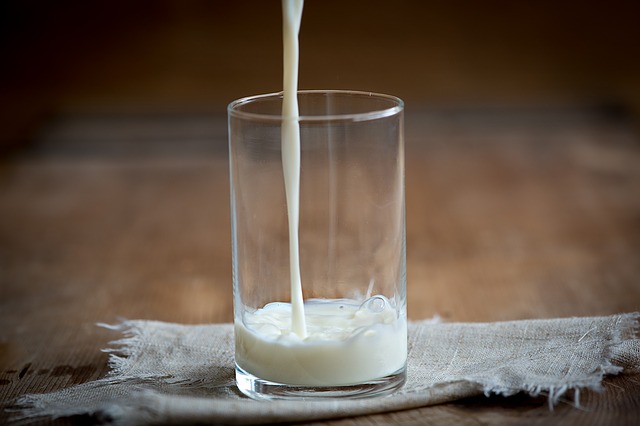Clients always ask me for an alternative to cows milk. As more of us are becoming aware of intolerances to dairy, there is a real shift to healthy cost effective alternative.
Dairy products contain a protein called casein. Casein in cow’s milk is 300 times higher than in human milk.
By the age of 2-3 years old our ability to break down the lactose in milk decreases, as we are one of the only creatures on earth that continue to consume milk into adulthood this is where problems arise for many of us.
Bloating, abdominal pain, gas, loose bowels, eczema, acne, sinus and respiratory issues have all been linked to lactose intolerance.
Other factors begin at the farming and production level, with the hormones and antibiotics that are given to cows finding their way into our food.
Pasteurisation of milk destroys various essential enzymes and the removal of the fat to produce skimmed or low fat products in turn reduces the ability of the body to absorb the nutrients in the milk.
The new A2 milks on the market can help if you do feel any of the issues mentioned above but again you need to trust the source and you need to know how the animals are treated and kept to ensure there aren’t any hidden nasties lurking.
Goat products are available and, as they are closer in make up to human milk, they can cause less of an issue for our bodies.
I remember a story of a cows kept by Harikrishna’s. They sang to them every day, groomed them, they lived in a wonderful natural pasture and roamed practically free. The fresh milk from these cows produced no reaction in lactose intolerance people.
Happy cow = Happy milk
In our pursuit of cow less happiness, we have tried and tested it all! Raw milk (also called bath milk or cleopatra’s milk), is illegal to sell in many states, but it can cause less of an issues to our bodies as it’s in it’s more natural state.
Soy should be avoided as it’s highly processed, can inhibit mineral absorption and disrupt the function of your endocrine system. Quinoa milk is ok if you can handle the smell of errr, quinoa on your cereal. Oat milk is great if you aren’t gluten free.
Coconut milk, yummy but to sweet for some. Rice milk works well and we use it in cooking as well as in tea and on cereals. One of our favourites has to be Almond Milk, preferably home made to save on the price tag!
I’ve just whipped up 2 litres of lovely almond milk in around 20 minutes and it’s chilling in my fridge ready for breakfast tomorrow and for me to give to friends. Yummy! It costs a fraction of the price of the shop brought stuff and tastes amazing.
Here’s The Recipe:
1.5 cups raw almonds
4 cups water
1 tsp vanilla extract
1.5 tbsp 100% real maple syrup or raw honey
1/2 tsp cinnamon (or more if you love it!)
- Blend the almonds with around 1.5 cups of water for 1-2 minutes until it forms a yummy looking paste.
- Add the cinnamon, maple syrup, cinnamon and the rest of the water and continue to blend for another 2-3 minutes.
- Strain through a muslin cloth and transfer to a glass bottle.
- Stores in the fridge for around 5 days.
(makes around 1 litre)
Don’t throw away the remains of the almonds. Crumble the mixture into a baking tray and dry in a low oven (100 degrees) for around 1 hour. It makes perfect almond meal for cooking or if you cook it a bit longer until it browns, a brilliant cereal topping.
So enjoy experimenting with other milk alternatives, I’d love to know what you enjoy. Or go out and buy a cow, sing to it and get your own happy milk!!






